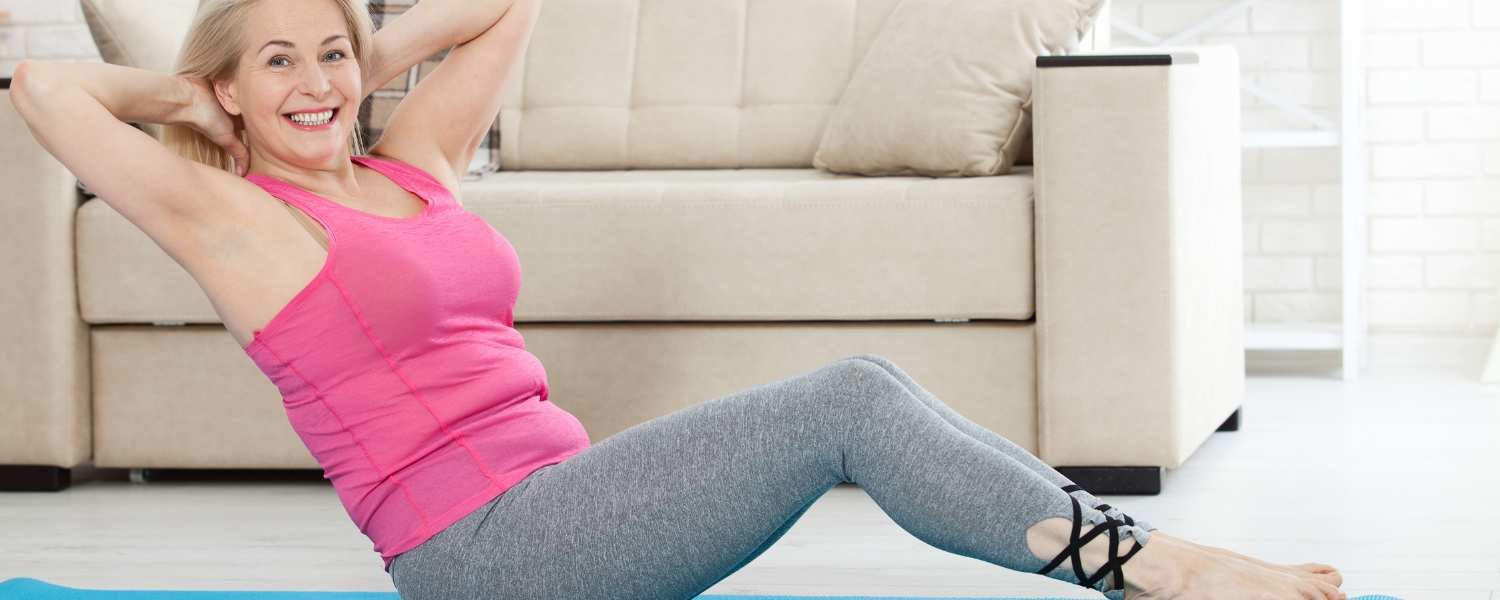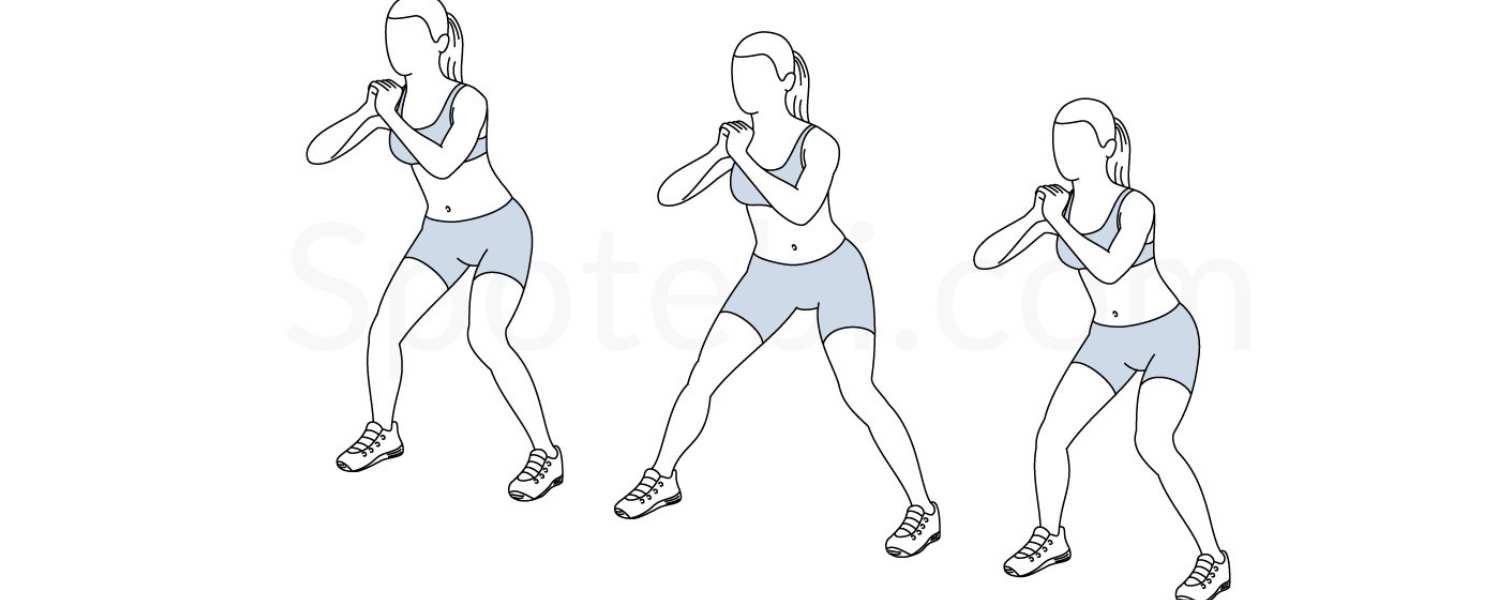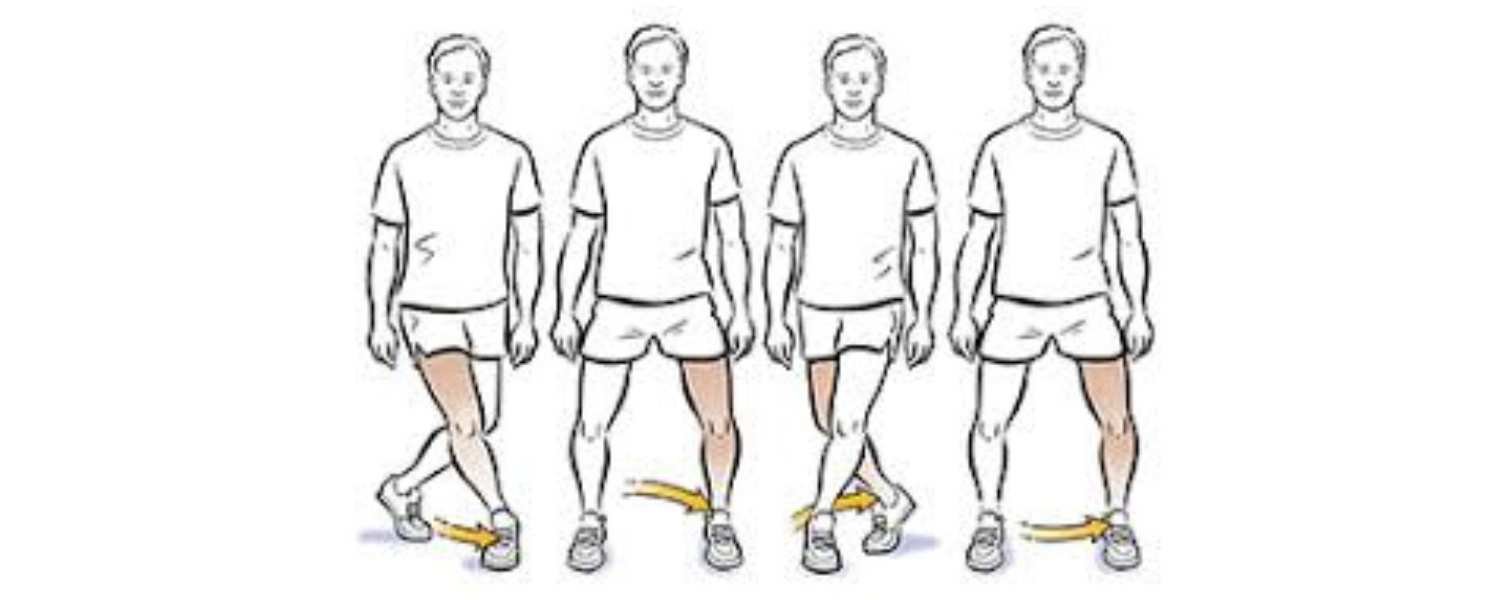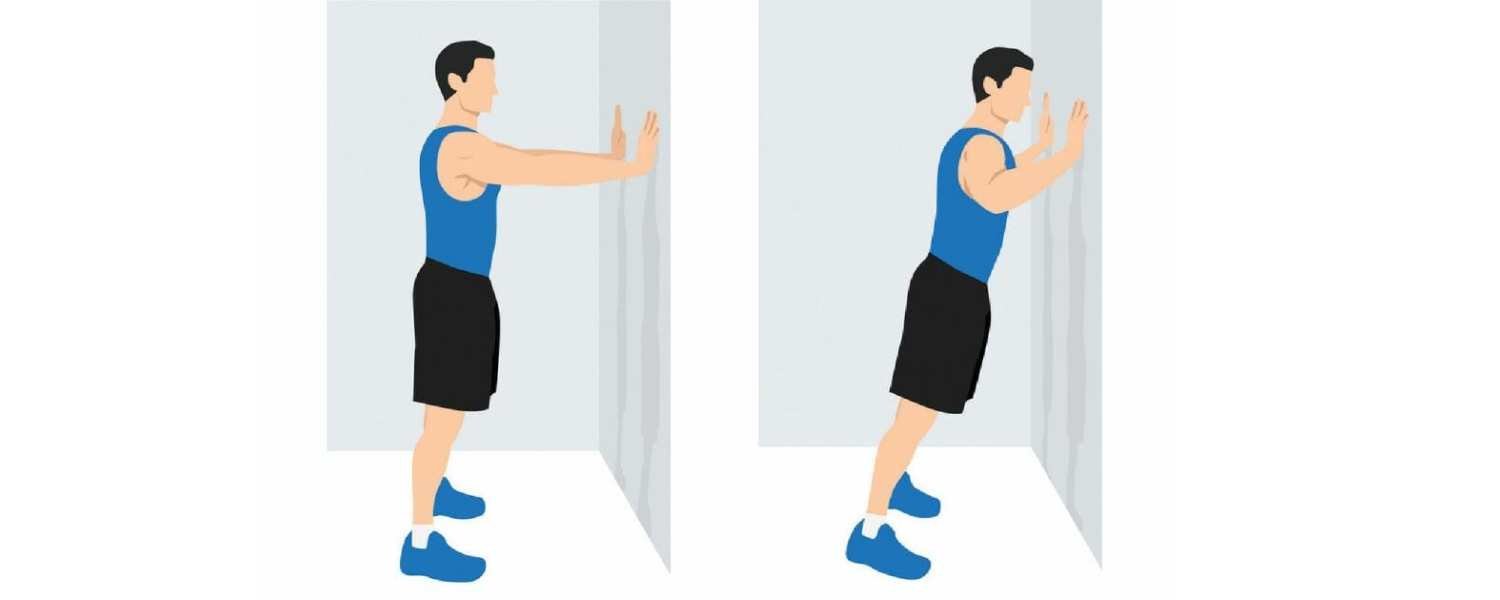Your cart is currently empty!
As we age, the significance of maintaining balance exercises for seniors cannot be overstated, as it plays a pivotal role in our overall well-being and independence. Incorporating balance exercises into seniors’ daily routines is essential for seniors and older adults to enhance stability and reduce the risk of falls. These exercises strengthen muscles and improve coordination and proprioception—the body’s sense of its position in space. In this comprehensive guide, we’ll explore a variety of simple yet effective balance exercises explicitly tailored for older adults, along with essential tips for maximizing their benefits.
Tips to find your balance

Maintaining balance exercises for seniors becomes increasingly essential for overall well-being and preventing falls as we age. Incorporating balance exercises into your routine can significantly enhance stability and reduce the risk of injuries. Here are some simple yet effective balance exercises tailored for seniors and older adults:
1. Single Leg Stance
Stand tall with feet hip-width apart. Lift one foot slightly off the ground, balancing on the other leg. Hold for 10-30 seconds, then switch legs. This exercise strengthens stabilizing muscles in the legs and improves proprioception.
2. Heel-to-Toe Walk
Take a step forward, placing the heel of one foot directly in front of the toes of the opposite foot. Continue this heel-to-toe pattern, walking in a straight line for 10-20 steps. This exercise challenges balance and coordination.
3. Tandem Stance
Stand with one foot directly in front of the other, heel to toe, like walking on a tightrope. Hold this position for 10-30 seconds, then switch feet. This exercise helps improve balance and posture.
4. Chair Yoga:
Incorporate yoga poses that focus on balance, such as tree pose or warrior III, using a chair for support if needed. Yoga enhances flexibility, strength, and stability.
Remember these critical tips while performing balance exercises for seniors:
A. Start with your nondominant side to ensure balanced development.
B. Maintain proper posture and focus on a fixed point to stabilize your gaze.
C. Adjust your stance width and bend your knees slightly for better stability.
D. Distribute weight evenly between both feet to avoid imbalance.
E. Gradually challenge yourself by incorporating variations like closing one eye or changing arm positions.
By integrating these balance exercises into your routine and following these tips, you can enhance your stability, confidence, and overall quality of life as you age.
Simple balance exercises

Maintaining balance exercises for seniors is crucial for seniors to prevent falls and maintain independence. Fortunately, simple balance exercises for seniors can significantly improve stability and confidence in daily activities. Here are four accessible exercises tailored for older adults:
1. Rock the Boat
Start by standing with feet hip-distance apart. Extend your arms out to the sides for stability. Lift your left foot off the ground, bending your knee to bring your heel toward your bottom. Hold for up to 30 seconds before switching to the other side. Repeat three times on each side.
2. Weight Shifts
Stand with feet hip-width apart. Shift your weight onto your right foot while raising your left foot slightly off the ground. Hold this position for up to 30 seconds, then switch sides. Repeat three times on each side.
Consistency is vital when performing these balance exercises for seniors. Aim to incorporate them into your daily routine to see improvements in balance and stability over time. Listen to your body and consult a healthcare professional before starting any new exercise regimen, especially if you have pre-existing health conditions. By prioritizing balance exercises, older adults can enhance their overall well-being and continue confidently leading active lifestyles.
Core exercises

Maintaining balance exercises for seniors becomes increasingly crucial as we age. Incorporating simple yet effective balance exercises into our routine can significantly improve stability and prevent falls. Dedicating time to balance exercises is essential for overall health and well-being for seniors and older adults.
One such exercise is the tightrope walk. Mimicking the act of walking on a tightrope, this exercise enhances balance, posture, and core strength. Extend your arms to the sides and walk straight, focusing on a fixed point ahead. Elevate each foot, pausing for 2 to 3 seconds with each step, and aim for 20 to 30 steps.
Another beneficial exercise is the flamingo stand. Shift your weight onto one foot, lift the opposite foot, and extend the leg forward. Hold this position for 10 to 15 seconds, maintaining balance and stability. For added difficulty, reach your hands toward the extended foot. Repeat this exercise three times on each side.
Incorporating these balance exercises for seniors into a daily routine can help elderly individuals improve stability, reduce the risk of falls, and enhance overall quality of life. Individuals can maintain independence and mobility by focusing on core strength and balance as they age.
Sideways walking

Balance exercises are crucial for seniors to maintain independence and reduce the risk of falls. Incorporating balance exercises into daily routines can significantly enhance stability and mobility. One effective exercise to achieve this is sideways walking, a simple yet impactful activity that targets balance exercises for seniors.
How to Perform Sideways Walking:
1. Start in a Stable Position: Stand with your feet together and knees slightly bent. Ensure you’re in a comfortable and stable stance before beginning the exercise.
2. Take Controlled Steps: Slowly and deliberately step sideways with one foot, maintaining balance throughout the movement. Avoid rushing or jerky motions to maximize the exercise’s benefits.
3. Maintain Proper Form: As you step sideways, keep your hips level and avoid leaning excessively to one side. Engage your core muscles to stabilize your body throughout the exercise.
4. Alternate Sides: After completing a step with one foot, bring the other foot to meet it. Continue alternating sides to promote balance and coordination on both sides of the body.
5. Gradually Increase Difficulty: Start with a few steps and gradually increase as you become more comfortable with the exercise. Aim for ten steps in each direction or traverse the length of a room for a more challenging workout.
Sideways walking engages muscles throughout the lower body, including the hips, thighs, and calves, while enhancing proprioception—the body’s awareness of its position in space. Regular practice of this exercise can significantly improve seniors’ balance and stability, ultimately reducing the risk of falls and supporting independent living.
Incorporate sideways walking into your daily routine alongside other balance exercises for older adults to maintain and enhance overall stability and mobility. Consult with a healthcare professional before starting any new exercise regimen, especially if you have existing health concerns or mobility issues.
Tightrope Walk

Are you looking to improve your balance and coordination as you age? Incorporating balance exercises for seniors into your daily routine can help you stay steady on your feet and reduce the risk of falls. One practical and straightforward exercise to consider is the Tightrope Walk.
To perform the Tightrope Walk, all you need is a straight line—a piece of tape on the floor or the lines between tiles will do. Here’s how to do it:
Step 1: Choose a destination to walk toward, giving yourself a clear goal.
Step 2: Mimicking walking on a tightrope, extend your arms to the sides for balance as you stroll. Ensure that your feet stay directly on the line throughout the exercise.
Step 3: Focus on walking from heel to toe, maintaining each step for at least five seconds before taking the next one.
Practicing the Tightrope Walk daily can significantly enhance your coordination and stability. It challenges your proprioception—the sense of your body’s position in space—while also engaging your leg muscles and core for improved strength.
Incorporating balance exercises like the Tightrope Walk into your routine is vital for older adults to maintain independence and prevent falls. So, take a step towards better balance today!
Tree Pose

Maintaining balance becomes increasingly important for overall health and well-being as we age. Fortunately, incorporating balance exercises for seniors into your daily routine can help improve stability and reduce the risk of falls. One such exercise that is particularly beneficial for seniors is the tree pose.
The tree pose is a simple yet effective exercise that can be practiced almost anywhere. It requires only a sturdy chair for support. To begin, stand with your feet shoulder-width apart and hold onto the back of a chair for stability. Alternatively, you can place both hands on your chest if you prefer.
Next, lift your right leg straight up, turning your foot inward as you do so. Gently rest the sole of your right foot against the side of your left thigh. Focus on maintaining a tall, straight posture throughout the exercise.
Hold this position for at least 30 seconds before switching to the other leg. To maximize its benefits, aim to repeat the tree pose three times on each side.
Incorporating balance exercises like the tree pose into your daily routine can improve stability, flexibility, and coordination, ultimately enhancing your overall quality of life as you age. Practice these exercises today to stay strong, active, and independent for years.
Walking Heel to Toe

Maintaining balance becomes increasingly crucial for overall health and well-being as we age. Simple balance exercises for seniors can significantly enhance stability and prevent falls. One such exercise, known as “Walking Heel to Toe,” targets both strength and coordination.
Though it may seem basic, this exercise effectively strengthens the legs, which is crucial for maintaining stability while walking. Begin by placing your right foot directly in front of your left foot, ensuring the heel of your right foot touches the top of the toes of your left foot. Shift your weight onto your right heel and then transition to your toes. Repeat this sequence with your left foot, alternating the movement pattern.
Consistency is vital; aim to complete 20 steps in this heel-to-toe manner. This exercise enhances lower body strength and improves proprioception and coordination, crucial components of balance maintenance.
Incorporating balance exercises for seniors like Walking Heel to Toe into a routine can empower older adults to navigate daily activities and confidently reduce the risk of falls. By dedicating time to these simple yet effective exercises, balance exercises for seniors can enhance their quality of life and maintain independence for years.
Simple grapevine

Maintaining balance exercises for seniors becomes essential for overall well-being and independence as we age. Regular balance exercises can significantly improve stability and reduce the risk of falls among older adults. One such beneficial exercise is the simple grapevine technique.
The grapevine exercise involves sideways walking by crossing one foot over the other. This movement challenges coordination and enhances proprioception, which is crucial for maintaining balance exercises for seniors. Here’s how to perform it effectively:
1. Start in a Comfortable Position: Stand tall with your feet hip-width apart, ensuring ample space around you.
2. Begin the Grapevine: Cross your right foot over your left, moving sideways.
3. Bring Feet Together: After crossing your right foot, bring your left foot to join it.
4. Repeat on Both Sides: Aim to perform five cross-steps on each side.
Remember to maintain a slow and controlled pace to maximize the exercise’s effectiveness.
5. Utilize Support if Needed: If you’re new to balance exercises for elderly or feel unsteady, don’t hesitate to use a wall or sturdy object. Over time, as your balance improves, you can gradually reduce dependency on external support.
Incorporating the grapevine exercise into your routine can strengthen muscles, improve coordination, and boost confidence in your ability to maintain balance exercises for elderly. Remember, consistency is critical to reaping the full benefits of balance exercises for older adults. So, lace up your shoes, find a safe space, and enhance your stability today!
Wall Pushups

Maintaining balance exercises is crucial for seniors to lead active and independent lives. Incorporating balance exercises into daily routines can significantly enhance stability and prevent falls. The wall pushup is one effective yet simple exercise to improve balance for older adults.
Exercise Description
To perform wall pushups, start by standing arm’s length away from a sturdy wall, ensuring no obstacles like paintings or decorations exist. Lean forward slightly and place your palms flat on the wall at shoulder height and width. Keep your feet firmly planted on the ground. Slowly bring your body towards the wall by bending your elbows, maintaining a controlled movement. Once your face is close to the wall, gently push yourself back to the starting position, extending your arms fully. Aim to complete twenty repetitions of this exercise.
Wall Pushup Benefits:
Wall pushups engage the upper body muscles, particularly the chest, shoulders, and arms, enhancing strength and stability. Additionally, this exercise stimulates core muscles, promoting better posture and balance control. Since it requires minimal equipment and space, it’s convenient for seniors to incorporate into their daily routine.
Incorporating balance exercises like wall pushups into daily activities can significantly improve stability and reduce the risk of falls among seniors, promoting their health & wellness. Consistency is key, so aim to perform these exercises regularly to maintain strength and balance as you age. Always consult a healthcare professional before starting any new exercise routine, especially if you have health concerns.
Flamingo Stand

Are you searching for practical balance exercises tailored for seniors? Look no further than the Flamingo Stand! Specifically designed to enhance hip muscles and fortify your core, this exercise promises to improve stability and reduce the risk of falls among older adults.
To execute the Flamingo Stand:
Step 1: Position yourself near a supportive wall, ensuring you have something to steady yourself. Stand with your feet shoulder-width apart and lightly touch your hands to the wall for added support.
Step 2: Lift your right leg to hip height, mimicking a marching motion. Lower it back down and repeat the same movement with your left leg.
Step 3: Gradually increase the intensity by picking up the pace or elevating your legs.
Aim to perform 10 to 20 repetitions for each side during your exercise routine for optimal results.
Incorporating the Flamingo Stand into your regimen strengthens your hip muscles and improves your balance and stability. Balancing Body and Mind dedicated to fitness for years or embarking on your wellness path for the first time, these balance exercises for older adults offer an accessible and effective way to promote overall well-being.
Benefits

As we age, maintaining balance becomes increasingly crucial for overall well-being. Balance exercises tailored for seniors offer myriad benefits, from enhancing strength to bolstering confidence in movement.
These exercises improve posture and stability and enhance coordination, reducing the risk of falls and potential injuries. Growing Older Healthy The repercussions of a fall can be severe for seniors, emphasizing the importance of preventive measures.
A study carried out in 2016 showcased the effectiveness of balance exercises, revealing significant improvements in balance control and confidence among older adults after just six weeks of dedicated practice. Furthermore, these exercises enhanced coordination, leg strength, and ankle mobility.
Recent research from 2019 reaffirms the positive impact of balance and coordination exercises on older adults’ quality of life. In addition to physical benefits like stability, these exercises foster mental well-being by improving memory and spatial cognition.
To reap these benefits, it’s recommended that older adults engage in balance exercises at least two to three times per week. By incorporating these exercises into their routine, seniors can strengthen their bodies, boost confidence in movement, and enjoy an improved overall quality of life.
Conclusion
In the tapestry of life, balance emerges as a cornerstone, weaving together physical, mental, and emotional well-being. For seniors and older adults, the quest for equilibrium transcends the realms of mere stability, offering a pathway to independence and vitality. As we navigate the complexities of aging, embracing balance exercises for elderly becomes imperative, heralding a future adorned with strength, resilience, and confidence.
By incorporating these exercises into daily routines, seniors cultivate physical prowess and a profound sense of empowerment. Let us embark on this journey together, embracing balance as not merely a state of being but a testament to the unwavering spirit of resilience. As we stride forward, may we find harmony in every step, fortifying our bodies, minds, and souls for the adventures.
